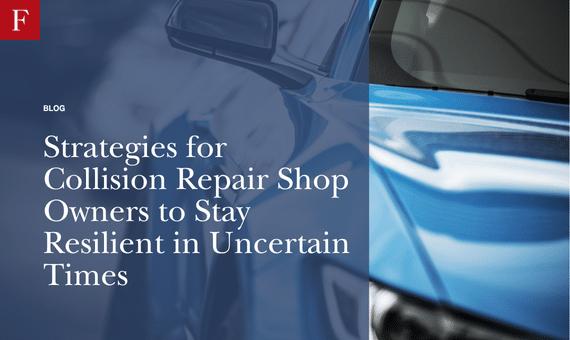
Strategies for Collision Repair Shop Owners to Stay Resilient in Uncertain Times
Running a collision repair shop isn’t for the faint of heart. Between insurance company pressures, razor-thin margins, staffing headaches, and the ever-changing car tech landscape, it’s a daily grind even in good times. And when the economy wobbles? Things get even trickier. But here’s the thing: you’ve made it through tough times before. With the right adjustments, you can come out of this stronger—and more valuable—than ever.
Here are a few field-tested strategies I’ve seen smart shop owners use to not just survive—but thrive—when things get bumpy.
1. Keep a Tight Grip on Cash Flow
When work slows down, cash becomes king. It’s not always about cutting—it’s about being smart.
Start by digging into your expenses. I’ve seen body shops saving thousands just by shutting off lights and heat in unused bays or switching parts suppliers with better terms. Shop rags, paint supplies, even paper towels—look for places where you’re over-ordering or paying premium prices for convenience.
If you’ve got aging parts inventory or unused paint, move it. Discount it, bundle it with jobs, or see if your supplier will take it back. Sitting inventory is just money on a shelf. Focus on reducing and consolidating products for a SKU reduction to better manage materials.
2. Reconnect With Core Customers
Your best customers—local fleets, dealerships, insurance DRPs—are your lifeline. Keep them close.
Call them. Not to pitch, but to check in: “How’s your volume been lately?” or “Anything we can help you prep for this quarter?” Share your production strategies (new equipment purchases, hosting educational classes, keeping up with the OE requirements, etc.) to show them that you are focused on being faster, better, cheaper but with quality and customer satisfaction at the forefront. That kind of outreach builds loyalty and trust.
Also take time to go through past estimates that didn’t convert. Follow up with those customers. If your team makes this part of the daily routine, it adds up fast.
3. Get the Word Out—Without Blowing the Budget
You don’t need a huge ad budget to stay visible. In fact, now’s a great time to double down on low-cost, high-impact marketing.
A simple before-and-after photo posted to your shop’s Instagram or Facebook goes a long way. Better yet, have a tech explain a common issue on video—like “how to spot hidden damage after a fender bender.” It builds credibility and shows you care.
Also think local. Host a “teen driver safety night” or partner with the local car wash or detailer. These things cost little but keep your name top of mind in the community.
4. Reevaluate Recurring Costs
Every dollar counts—especially when business softens.
Go line-by-line through your P&L. Are you paying for a software platform nobody uses? Still subscribed to an expensive estimating tool that your DRP doesn’t require? Consider downgrading or consolidating.
I’ve even seen shops renegotiate their rent—trading a small rent reduction for a longer lease term. Your landlord might prefer stability too. It never hurts to ask.
5. Build and Lean on Your Network
The best operators I know never go it alone. They swap advice, refer customers, and even trade services.
Stay active in local business groups or regional shop associations. You might pick up a new DRP lead or hear about a smaller shop looking to sell. That kind of insider knowledge is invaluable—especially if you’re considering your own growth, whether by expanding or preparing for a future sale.
Looking Ahead
Collision repair owners are some of the toughest, most hands-on entrepreneurs I know. But even the strongest businesses feel the pressure when the economy shifts.
Concentrate on what you can control—your cash, your customer base, your ability to pivot—and you’ll not only weather the storm but position your shop to be stronger (and more valuable) on the other side. Changing business conditions create opportunities, be prepared to take advantage.
If you’re thinking about the long-term value of your business, or just want to talk through strategy, don’t hesitate to reach out. We’ve helped shop owners across the country navigate growth, transition, and exit—on their terms.
Download the full article here.














